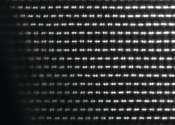Scientists create stable materials for more efficient solar cells
Researchers from Queen Mary University of London have developed a new process for producing stable perovskite materials to create more efficient solar cells.
Dec 15, 2021
0
768
Engineering

Researchers from Queen Mary University of London have developed a new process for producing stable perovskite materials to create more efficient solar cells.
Dec 15, 2021
0
768
Engineering

Researchers at Kyoto University's Institute for Cell-Material Sciences (iCeMS) have developed a new approach to speed up hydrogen atoms moving through a crystal lattice structure at lower temperatures. They reported their ...
Jun 2, 2021
0
16
Energy & Green Tech

Acceleration due to gravity here on Earth is about 9.8m/s2, but if you're trying to build a rocket that will escape Earth's pull, you're going to have to do better than that. You would need to factor in wind resistance, heat ...
Mar 5, 2021
0
28
Engineering

Perovskites with their crystal structures and promising electro-optical properties could be the active ingredient that makes the next generation of low-cost, efficient, lightweight and flexible solar cells.
May 5, 2020
0
136
Electronics & Semiconductors

The future's getting brighter for solar power. Researchers from CU Boulder have created a low-cost solar cell with one of the highest power-conversion efficiencies to date, by layering cells and using a unique combination ...
Mar 5, 2020
0
292
Energy & Green Tech

Scientists at Oxford University have developed a solvent system with reduced toxicity that can be used in the manufacture of perovskite solar cells, clearing one of the barriers to the commercialisation of a technology that ...
Oct 5, 2016
0
0
Energy & Green Tech

Researchers from Hunan University have designed a layered oxide cathode for rechargeable lithium-ion batteries that achieves fast-charging performance, long life, and high safety using only an ultra-low amount of cobalt. ...
Jul 2, 2024
0
5
Energy & Green Tech

The quest for efficient and clean energy sources has led to the exploration of ammonia as a hydrogen carrier due to its high hydrogen content, energy density, and ease of liquefaction. Solid oxide fuel cells (SOFCs) are highly ...
Jun 7, 2024
0
1
Energy & Green Tech

Perovskite solar cells, which use materials with the same crystal structure as perovskite, are lightweight, flexible, easy to manufacture, and inexpensive. They can be attached to many different surfaces and are a promising ...
May 15, 2024
0
1
Energy & Green Tech

As an integral part of its technological agenda, Russia is developing its own production of lithium-ion batteries. Despite the vast lithium reserves, battery production volumes fall short of the demand. Of special relevance ...
Oct 6, 2023
0
53
In mineralogy and crystallography, a crystal structure is a unique arrangement of atoms in a crystal. A crystal structure is composed of a motif, a set of atoms arranged in a particular way, and a lattice. Motifs are located upon the points of a lattice, which is an array of points repeating periodically in three dimensions. The points can be thought of as forming identical tiny boxes, called unit cells, that fill the space of the lattice. The lengths of the edges of a unit cell and the angles between them are called the lattice parameters. The symmetry properties of the crystal are embodied in its space group. A crystal's structure and symmetry play a role in determining many of its properties, such as cleavage, electronic band structure, and optical properties.
This text uses material from Wikipedia, licensed under CC BY-SA